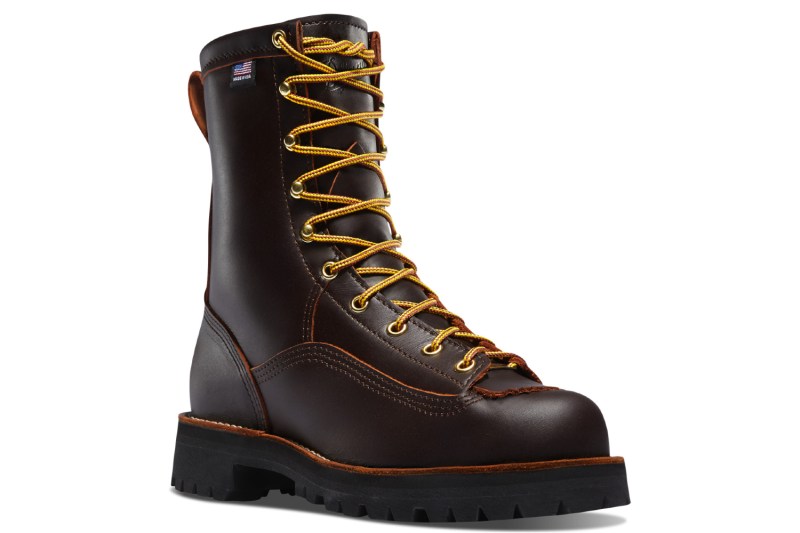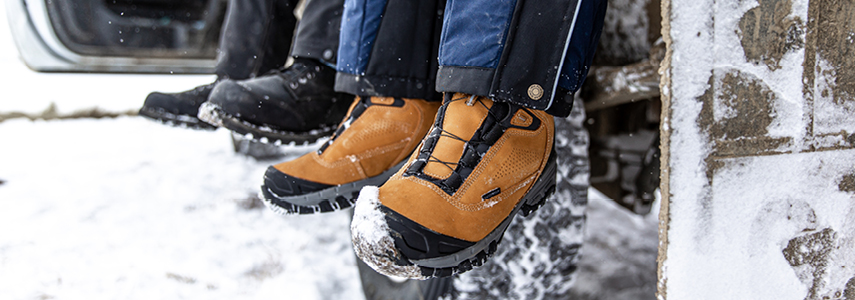Why Cold Weather Boots Matter
When it comes to working in cold weather, having the right footwear can be a matter of safety and comfort. Wearing inadequate boots can lead to cold-related injuries, such as frostbite and hypothermia, which can be debilitating and even life-threatening. In fact, according to the Occupational Safety and Health Administration (OSHA), cold stress can occur when the body’s core temperature drops below 95°F (35°C). This can happen quickly, especially in wet or windy conditions. Work boots for cold weather are specifically designed to combat these risks, providing insulation, waterproofing, and traction to keep feet warm, dry, and stable. By investing in a good pair of cold weather work boots, individuals can reduce their risk of injury and maintain their productivity, even in the most challenging winter conditions.
Key Features to Look for in Cold Weather Work Boots
When selecting work boots for cold weather, it’s essential to consider several key features that will ensure your feet stay warm, dry, and protected. Insulation is a critical component, as it helps to retain body heat and maintain a comfortable temperature. Look for boots with insulation materials like Thinsulate, PrimaLoft, or similar technologies that provide excellent warmth without compromising mobility. Waterproofing is another vital feature, as it prevents water and moisture from entering the boot. A waterproof membrane, such as Gore-Tex or eVent, will help to keep your feet dry and comfortable. Traction is also crucial, as it provides stability and grip on icy or snowy surfaces. A good pair of work boots for cold weather should have a rugged outsole with deep lugs and a specialized tread pattern to ensure maximum traction. Additionally, consider features like breathability, moisture-wicking linings, and adjustable cuffs to ensure a comfortable and secure fit. By prioritizing these essential features, you can find the perfect pair of work boots for cold weather that will meet your specific needs and preferences.
How to Choose the Right Insulation for Your Boots
When it comes to work boots for cold weather, insulation is a critical component that can make all the difference in keeping your feet warm and comfortable. With various insulation types available, selecting the right one can be overwhelming. Thinsulate, PrimaLoft, and similar technologies are popular choices for cold weather work boots, each offering unique benefits and characteristics. Thinsulate, for instance, is a lightweight and breathable insulation that provides excellent warmth without compromising mobility. PrimaLoft, on the other hand, is a synthetic insulation that mimics the warmth and lightweight properties of down insulation, but with the added benefit of retaining its insulating properties when wet. When choosing the right insulation for your boots, consider factors such as the temperature range you’ll be working in, your activity level, and your personal comfort preferences. For example, if you’ll be working in extremely cold temperatures, a boot with a higher insulation rating, such as Thinsulate Ultra, may be a better choice. By understanding the different insulation types and their characteristics, you can make an informed decision and find the perfect pair of work boots for cold weather that meets your specific needs.
Top-Rated Cold Weather Work Boots for Men and Women
When it comes to finding the best work boots for cold weather, there are several top-rated options to consider. For men, the Carhartt Insulated Work Boot is a popular choice, offering a rugged outsole, waterproof membrane, and Thinsulate insulation for warmth. The Original Muck Boot Company’s Arctic Ice Work Boot is another top pick, featuring a comfortable EVA midsole, breathable mesh lining, and a rugged outsole for traction. For women, the Sorel Caribou Boot is a great option, providing a waterproof and breathable design, Thinsulate insulation, and a rugged outsole for traction. Other top-rated brands for work boots for cold weather include The North Face, Columbia, and Kamik. When selecting the right pair, consider factors such as insulation type, waterproofing, and traction, as well as features like breathability, moisture-wicking linings, and adjustable cuffs. By reviewing and comparing top-rated cold weather work boots, you can find the perfect pair that meets your specific needs and preferences. Whether you’re working in extreme cold temperatures, ice, or snow, a high-quality pair of work boots for cold weather can make all the difference in keeping your feet warm, dry, and protected.
What to Expect from Cold Weather Work Boots in Extreme Conditions
When working in extreme cold temperatures, ice, and snow, it’s essential to understand what to expect from your work boots for cold weather. High-quality work boots are designed to perform in these conditions, but they still require proper care and maintenance to ensure their effectiveness. In temperatures below -20°C, even the best insulation can struggle to keep your feet warm, so it’s crucial to dress in layers and wear moisture-wicking socks to help regulate body heat. On icy surfaces, look for work boots with aggressive tread patterns and lugs that can grip the ice, reducing the risk of slips and falls. In deep snow, work boots with a higher ankle height and a waterproof membrane can help keep your feet dry and warm. To maintain the performance of your work boots in extreme conditions, make sure to clean and condition them regularly, and store them in a dry, cool place when not in use. By understanding what to expect from your work boots in extreme cold weather and taking proper care of them, you can ensure your feet stay warm, dry, and protected, even in the most challenging environments.
Breaking in Your Cold Weather Work Boots: Tips and Tricks
Breaking in new work boots for cold weather can be a daunting task, but with the right approach, you can ensure a comfortable and successful transition. One of the most critical steps is to condition your boots before wearing them in cold weather. Apply a waterproofing treatment to the leather or synthetic materials to protect them from the elements and enhance their durability. Next, stretch the boots by wearing them around the house or on short walks, gradually increasing the duration and intensity of wear. This will help mold the boots to your feet and reduce the risk of blisters and discomfort. When wearing your boots in cold weather, start with shorter periods and gradually increase the time as your feet acclimate. It’s also essential to wear moisture-wicking socks and dress in layers to regulate body heat and prevent moisture buildup. By following these tips and tricks, you can break in your cold weather work boots quickly and comfortably, ensuring your feet stay warm, dry, and protected in even the most extreme conditions.
Common Mistakes to Avoid When Buying Cold Weather Work Boots
When purchasing work boots for cold weather, it’s essential to avoid common mistakes that can compromise the performance and safety of your footwear. One of the most critical mistakes is neglecting fit. Ill-fitting boots can lead to discomfort, blisters, and even injuries. Make sure to try on several sizes and styles to find the perfect fit for your feet. Another mistake is ignoring material quality. Cheap, low-quality materials can compromise the durability and waterproofing of your boots. Look for high-quality materials, such as full-grain leather or rugged synthetic materials, that can withstand the harsh conditions of cold weather. Additionally, overlooking essential features, such as insulation, waterproofing, and traction, can leave your feet vulnerable to cold-related injuries. Always prioritize these features when selecting work boots for cold weather. Furthermore, failing to consider the specific demands of your job or activity can lead to boots that are not suitable for your needs. Consider the terrain, temperature, and activities you will be performing when selecting the right work boots for cold weather. By avoiding these common mistakes, you can ensure that your work boots provide the protection, comfort, and performance you need to brave the cold.
Investing in Quality: Why Cold Weather Work Boots Are Worth the Cost
When it comes to work boots for cold weather, investing in high-quality footwear can make all the difference. While it may be tempting to opt for cheaper alternatives, high-quality cold weather work boots offer unparalleled durability, performance, and long-term cost savings. One of the primary benefits of high-quality work boots is their ability to withstand the harsh conditions of cold weather. Premium materials, such as full-grain leather and rugged synthetic materials, can resist water, ice, and snow, ensuring that your feet stay dry and warm. Additionally, high-quality insulation, such as Thinsulate or PrimaLoft, can provide superior warmth and comfort, even in extreme cold temperatures. Furthermore, high-quality work boots are designed to last, withstanding the rigors of daily wear and tear, and reducing the need for frequent replacements. This can lead to significant long-term cost savings, as well as reduced waste and environmental impact. Moreover, high-quality work boots often come with advanced features, such as slip-resistant soles and breathable membranes, which can enhance safety and performance. By investing in high-quality work boots for cold weather, you can ensure that your feet are protected, comfortable, and productive, even in the most challenging conditions.







